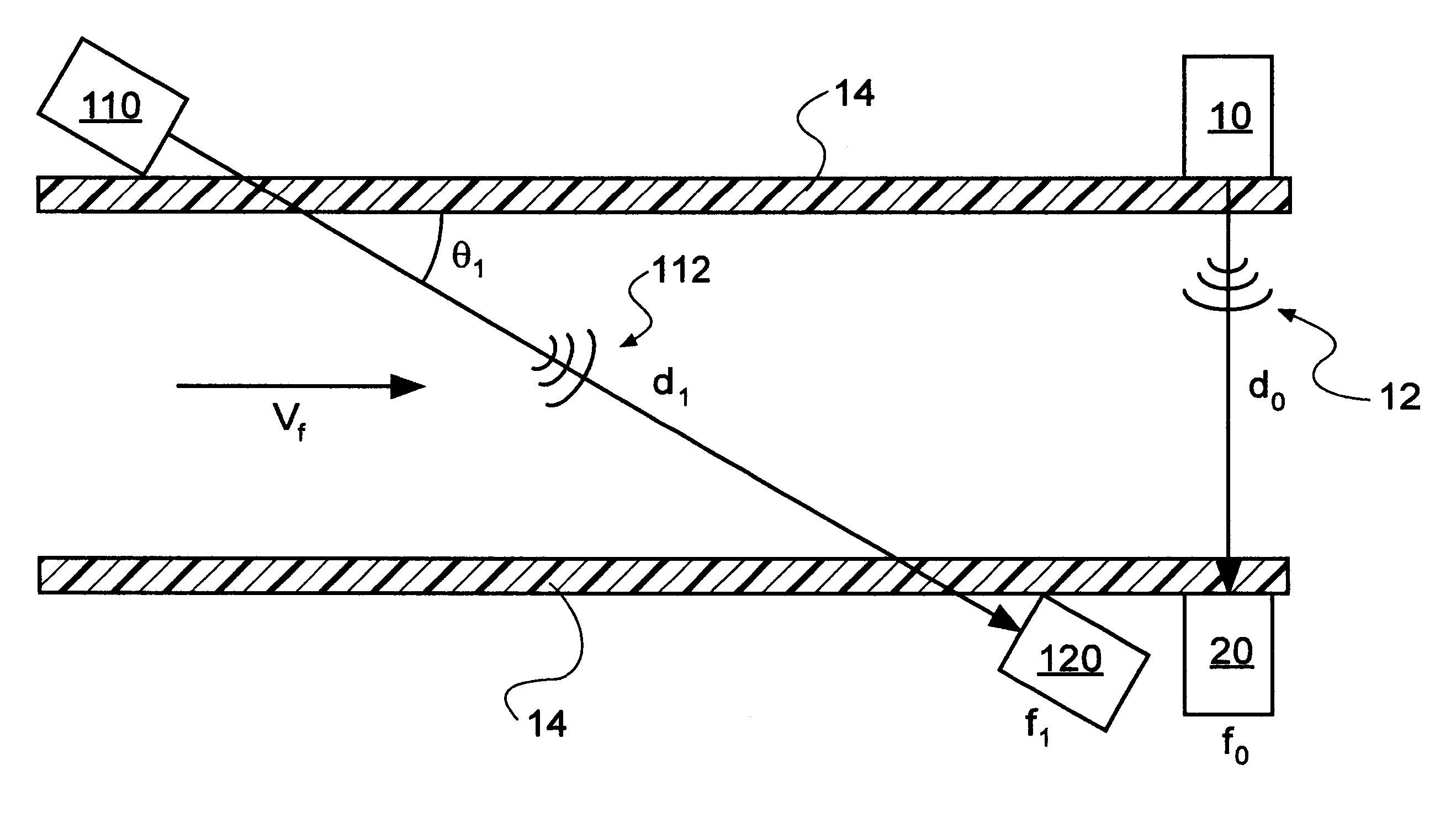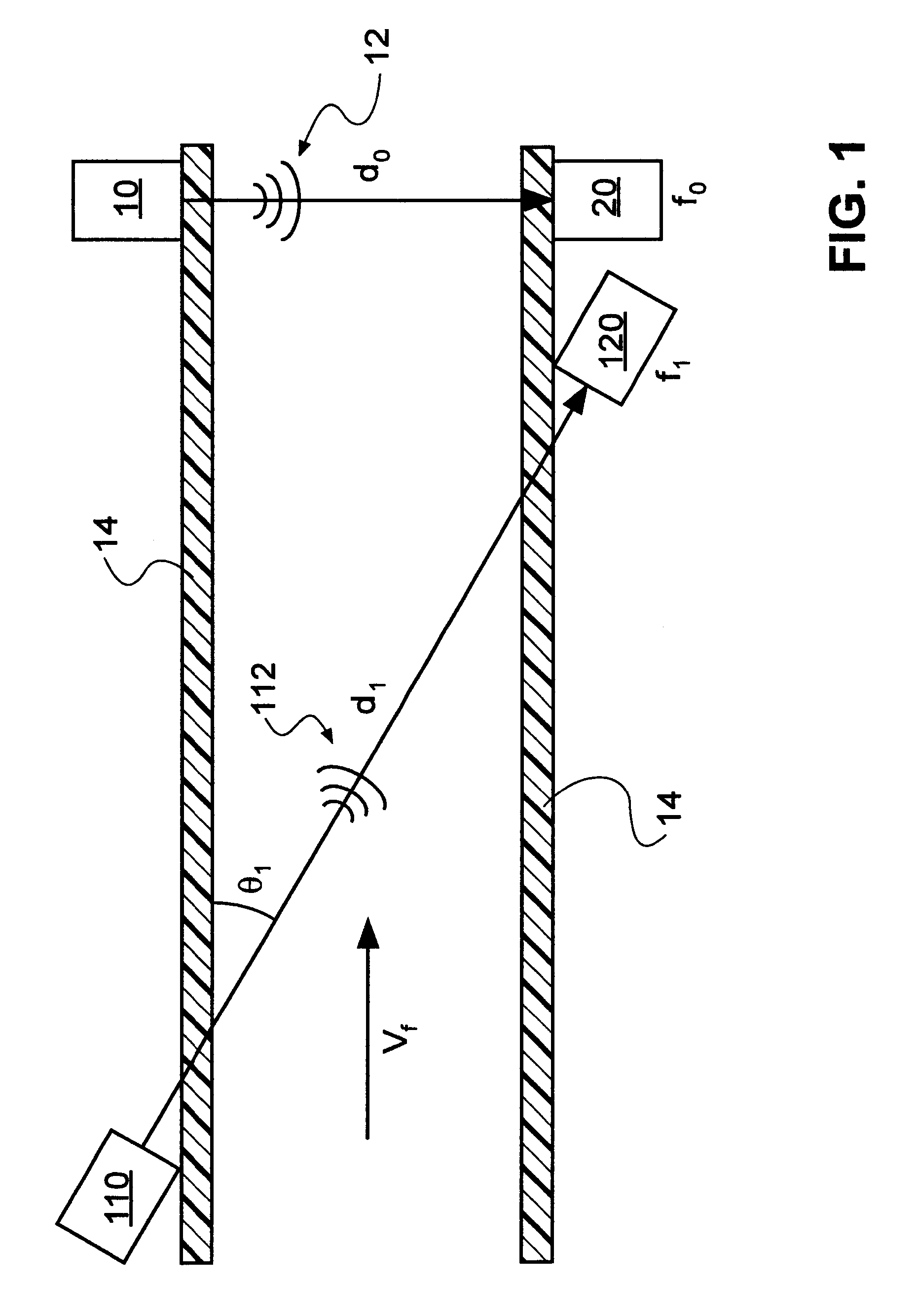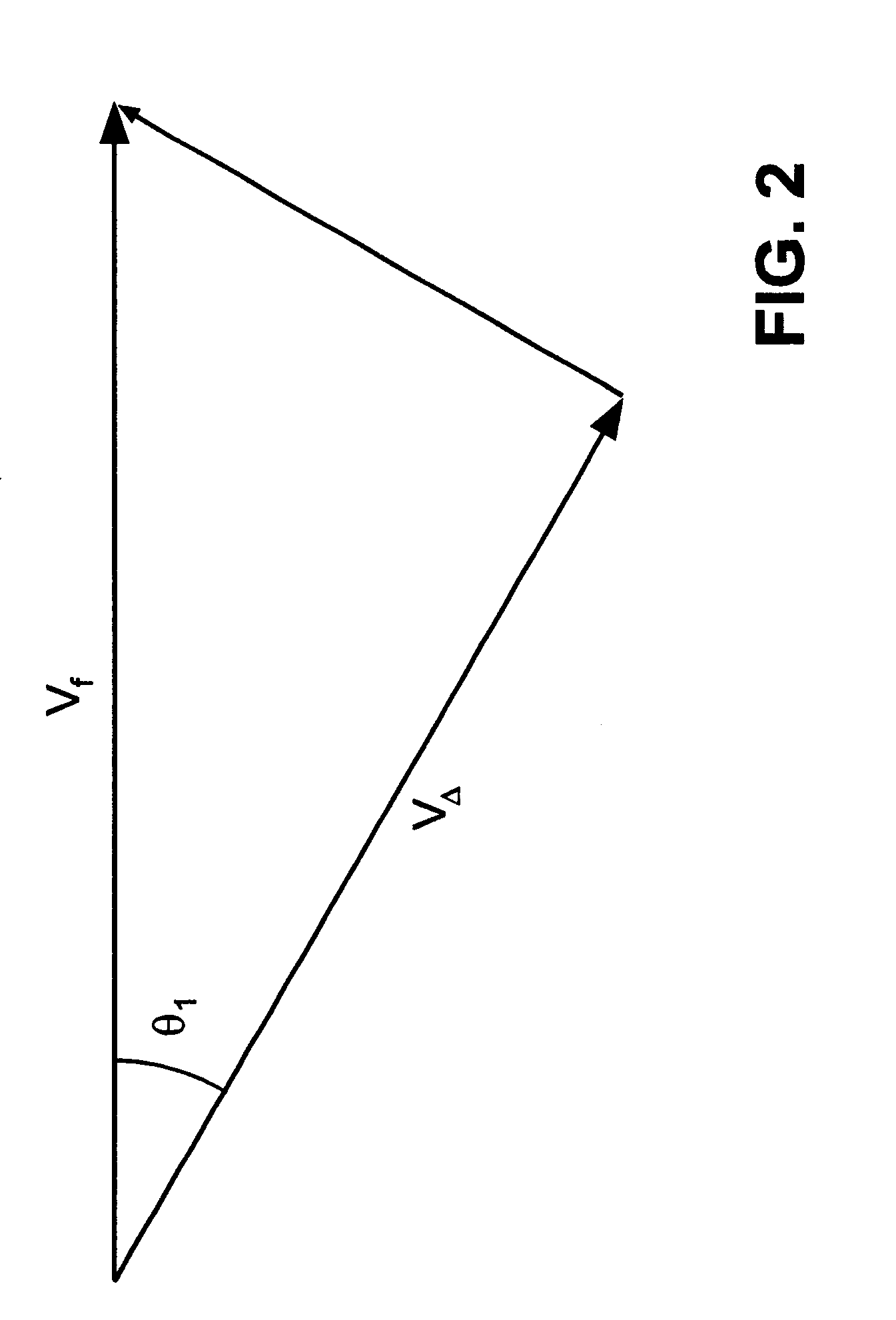Ultrasonic flow metering system
a flow metering and ultrasonic technology, applied in the direction of instruments, liquid/fluent solid measurement, processing detected response signals, etc., can solve the problems of unfavorable combustion device, unfavorable combustion device, and undesirable contraction of the flow of water through the irrigation pipe, so as to facilitate the triggering of a new pulse and eliminate the sinusoidal nature of the puls
- Summary
- Abstract
- Description
- Claims
- Application Information
AI Technical Summary
Benefits of technology
Problems solved by technology
Method used
Image
Examples
example 15
is a paper example of measuring flow velocity of a gas stream past a flat plate. The flat plate is affixed to an aircraft and measurements of flow velocity are taken during a flight. It is assumed that the air stream through which signal 12 and signal 112 pass, is fully developed and boundary layer effects are negligible. Transmitter 10 and receiver 20 are separated by about 3 cm. Transmitter 110 and receiver 120 are separated by about 5 cm. Transmitter 10 and receiver 20 are configured in a substantial vertical arrangement in relation to the flow of air past the flat plate. Transmitter 110 and receiver 120 are configured at an angle that subtends from the horizontal by about 30.degree..
Capacitive coupling effects occur due to both the magnitude of the capacitive charge and the surface areas of transmitters 10, 110 and receivers 20, 120 that are exposed. Transmitters 10, 110 generate a signal in a frequency range between about 100 kHz to about 10 MHz. In this application, where audi...
PUM
 Login to View More
Login to View More Abstract
Description
Claims
Application Information
 Login to View More
Login to View More - R&D
- Intellectual Property
- Life Sciences
- Materials
- Tech Scout
- Unparalleled Data Quality
- Higher Quality Content
- 60% Fewer Hallucinations
Browse by: Latest US Patents, China's latest patents, Technical Efficacy Thesaurus, Application Domain, Technology Topic, Popular Technical Reports.
© 2025 PatSnap. All rights reserved.Legal|Privacy policy|Modern Slavery Act Transparency Statement|Sitemap|About US| Contact US: help@patsnap.com



